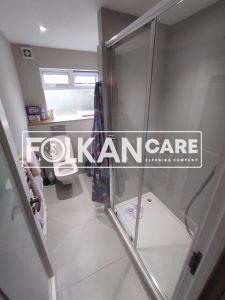
Showers are sterile and clean, but the truth is that as time goes by, they accumulate limescale and calcium deposits. As a result, the shower door can end up not looking that great, due to limescale buildup. It’s extremely important to find the right way to take the right measures and remove all the limescale from your shower doors.
What is limescale?
Calcium carbonate or limescale is a green or white deposit that forms on showerheads, glass, tile and fixtures. It appears when the tile or fixture gets in contact with hard water. Since hard water has a lot of magnesium and calcium, they tend to build up and eventually you will have a chalky, harsh sediment named limescale that forms on the door.
Preventing the limescale buildup
It’s important to know how to prevent limescale buildup, and a good idea is to use vinegar spray. This helps lower the calcium deposits naturally. All you have to do is to fill up a spray bottle with some vinegar, then you just spray it on the shower door every time you use it. Ideally you want to dry the glass with a towel. You can also install a water softener. This will help reduce the mineral content in the hard water, so it’s a very good option to consider right away.
Learn how to remove limescale from the shower doors
At first, the limescale buildup seems very abrasive, but the truth is that you can use some household items in order to break it up. Here you have the steps to follow if you want to remove limescale quickly and without worries.
- Start with boiling a cup of white vinegar. Then you can put it in a spray bottle once it’s cool. The boiled white vinegar is what you need to remove the limescale from your shower door.
- It’s important to use a set of rubber gloves in order to carry that solution to the shower.
- Now you can dip a few paper towels in the hot vinegar, then you can adhere those to the door. The acid will soak in the limescale, and the deposits will start to get loose. Remember that this process can take around 30 minutes or even an entire hour. Spray the paper towels with some vinegar as this will ensure the glass is properly saturated.
- Add some baking soda to a sponge or a damp cloth. This is when you want to start wiping down the shower door. You don’t want to scrub too much, as you can end up damaging the glass if you’re not careful.
- Lastly, you want to use the distilled water so it can rinse the vinegar and baking soda from the door. In case you still have some limescale deposits, use the same method with baking soda and repeat until it’s all done.
We recommend you to use all these tips and tricks if you want to ensure that you remove the limescale buildup from your shower door. It will take a bit of a trial and error, but the results you can get are indeed second to none every time. Just use that to your own advantage, follow the instructions properly and remember to use those tips above if you want to prevent any limescale buildup in the future!
